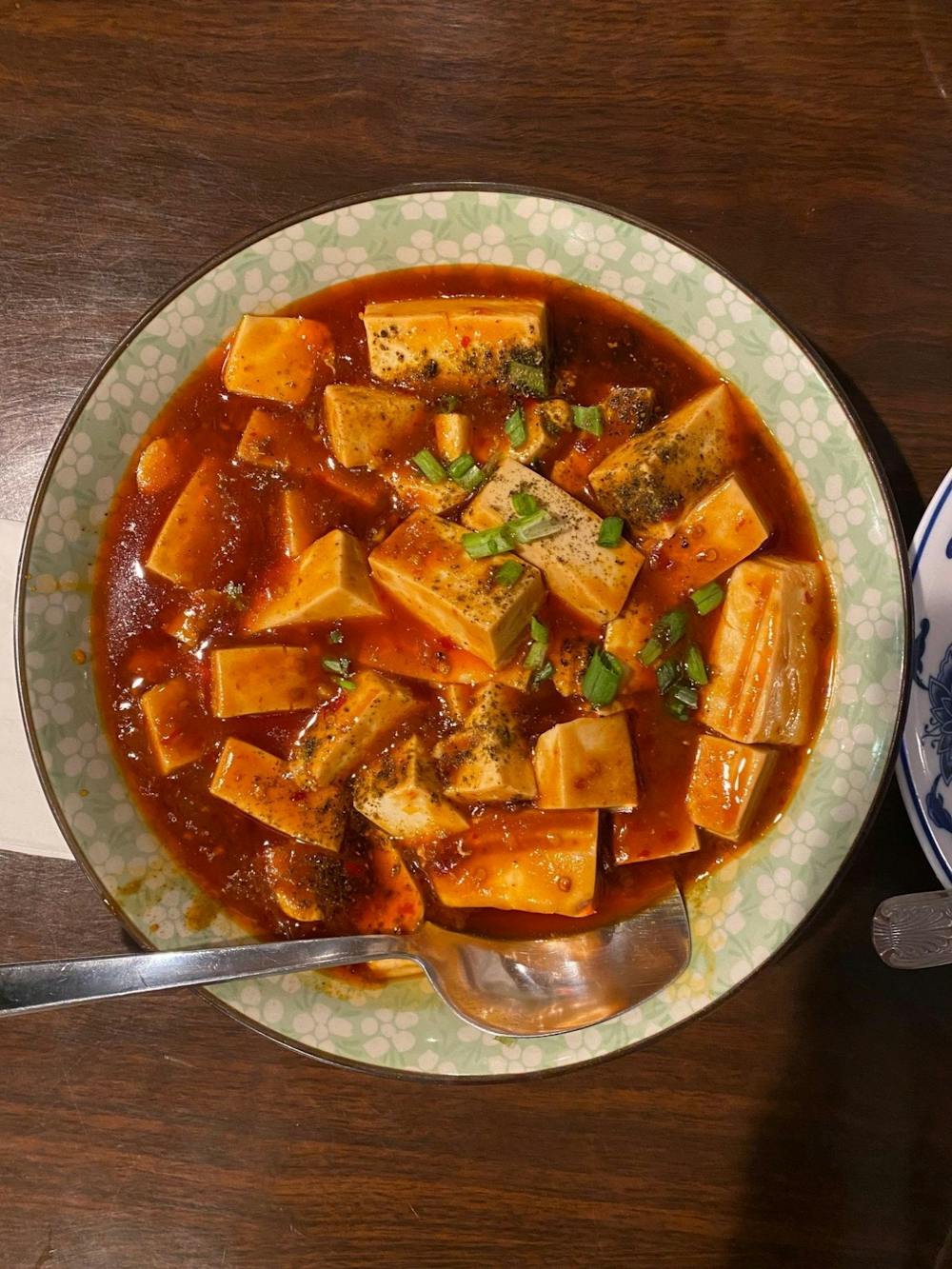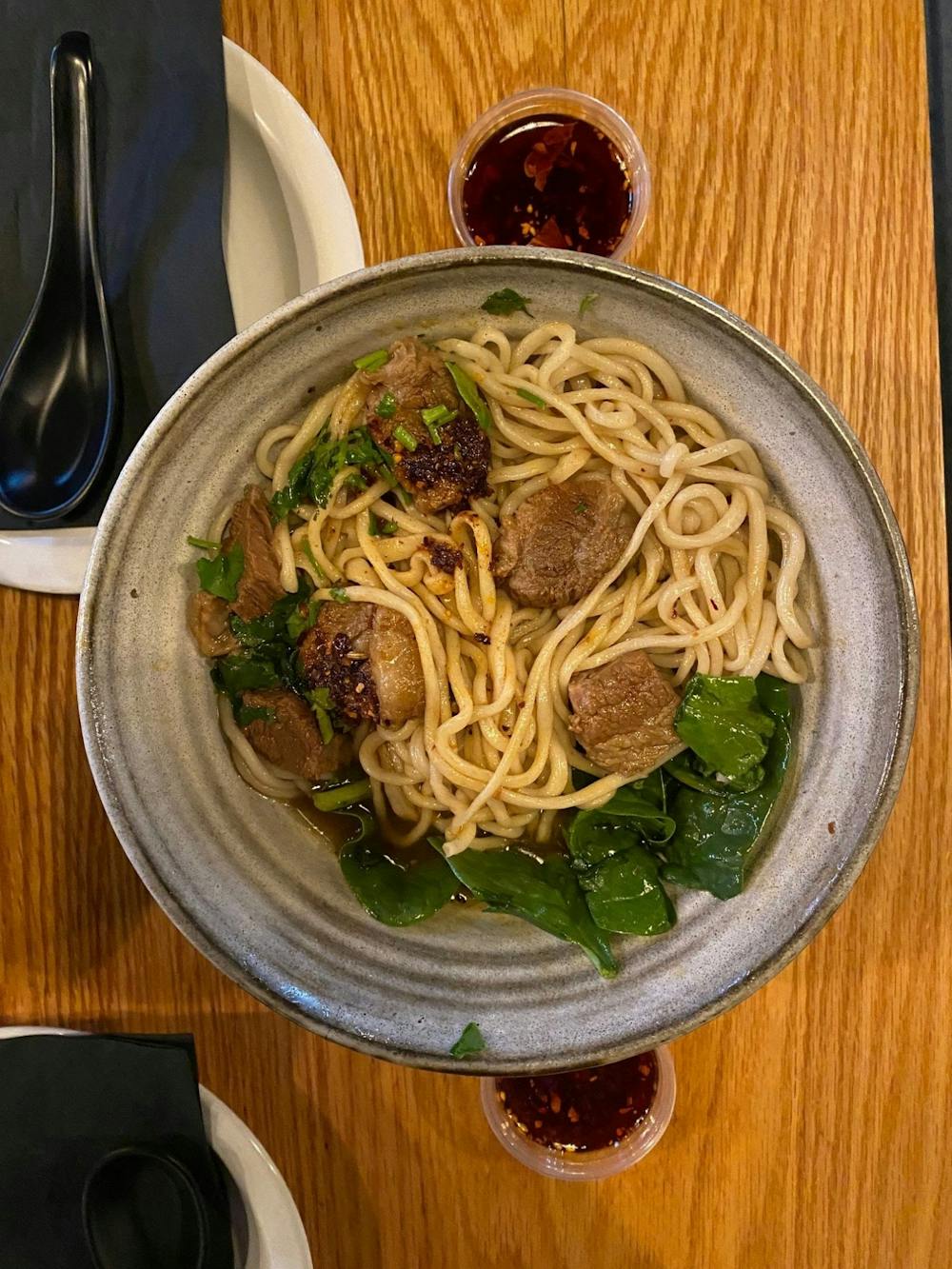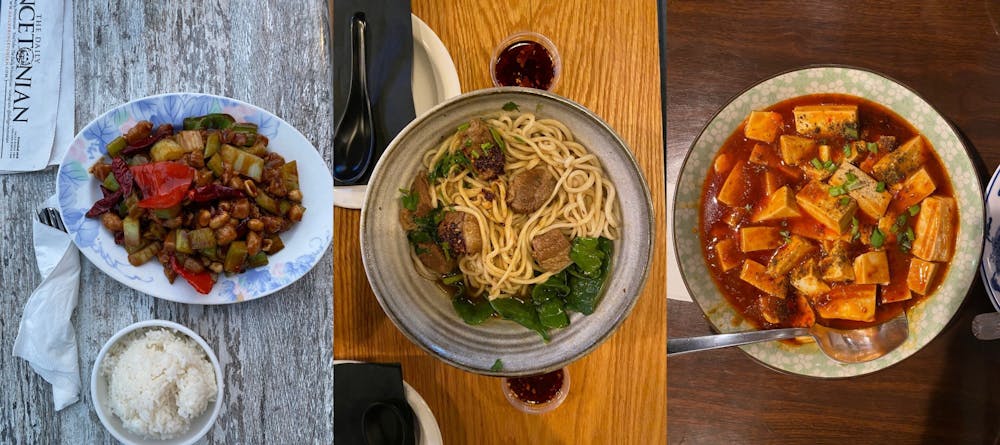As a Chinese American who grew up in a household eating rice and homemade Chinese food every day, it was definitely a tough adjustment to dining hall food. So, I wanted to create a restaurant guide for those of you looking for good Chinese spots in Princeton.
I limited my selection to places within walking distance from campus and evaluated the restaurants based on ambience, affordability, and food quality. Here are my food adventures — enjoy!
SC House

Mary Ma / The Daily Princetonian
My first impression of SC House was the ambience, which was reminiscent of mainland Chinese restaurants. As I hummed along to some C-pop songs while watching a CCTV eating show on the TV, I was reminded of restaurants I’ve been to in Wuhan.
They give you chopsticks instead of forks as eating utensils. The menus featured polished photos of the various dishes they offered, all of which were authentic Sichuan dishes. With options ranging from Husband and Wife Lung Slices to dry pots to pig trotters, this restaurant is the closest to traditional Chinese food you’ll find in Princeton.
I ordered Ma Po Tofu, a staple of Sichuan cuisine. Spicy, numbing, and fragrant, the dish did not disappoint. The tofu was silky and coated with the perfect amount of sauce, and paired wonderfully with the white rice. The Sichuan peppercorn is the star of the dish. SC House grinds the peppercorn so the numbing acidic flavor punches your tongue without the unpleasant textural crunches you might get from restaurants that use whole peppercorns.
The portion size was hefty for one person and would probably be best suited for two people to eat. The prices here range at around $20-30 per entrée, though there are some entrées that are less expensive such as the Ma Po Tofu, which was $13.95.
Lan Ramen

Mary Ma / The Daily Princetonian
Situated in a dimly-lit basement and decorated with exposed wood and dark metal, Lan Ramen’s ambience is modern and industrial chic. The menu offers a wide selection of Lanzhou cuisine which is rare to see outside of China. The novelty of hand-pulled noodles, soup dumplings, and roujiamo is Lan’s special appeal.
I ordered the braised beef hand-pulled noodle soup. The first thing I noticed about the noodle soup was the bed of raw spinach lying atop everything. Spinach isn’t a vegetable normally used in Chinese ramen, as bok choy and Chinese broccoli are more common. The spinach did not add anything to the flavor or texture profile and felt like an afterthought, or a way to fill up the bowl.

Bouncy with the perfect amount of chewiness, the noodles were very delicious and definitely hand-pulled. However, there wasn’t enough broth or meat to carry the noodles. The broth was a tad too salty for my taste but the beef was deliciously tender and flavorful. I also tried some of their hot oil, which was nutty, spicy, and absolutely delectable.
The braised beef noodles were $14, which is expensive for the small portion size they serve. Lan Ramen also charges a 15 percent service charge in addition to NJ state taxes and tip, so be aware of that when visiting.
Tiger Noodles

Mary Ma / The Daily Princetonian
Basic furniture and sticky tables make Tiger Noodles feel like a generic Chinese takeout place. The menu includes both Chinese and Japanese food. The Chinese side of the menu features many classic American Chinese favorites such as Chicken and Broccoli and Orange Chicken.
I decided to order Kung Pao Chicken as a dish between American Chinese and authentic Chinese. The chicken itself was really tender. Unfortunately, there was barely any chicken in the dish as it consisted mostly of celery. I ended up with a plate of just celery, which wasn’t very pleasant.
The sauce was not too sweet, but it could have used a little more acidity to cut through the saltiness of the soy sauce. As a spice fanatic, I was sorely disappointed in the spice level of the dish. Traditionally, Kung Pao Chicken is a Sichuan dish meant to be spicy and numbing. I could barely taste the chili pepper and there were no numbing Sichuan peppercorns to be found.
The portion size was also really small for a price of $13.50. For those looking for a better deal, their lunch specials are around ten dollars and come with a dish, rice, and a side of spring roll or soup.
Mary Ma is a Contributing Writer for The Prospect at the ‘Prince.’ She can be reached at mm8810@princeton.edu, or on Instagram at @mary.z.ma.








